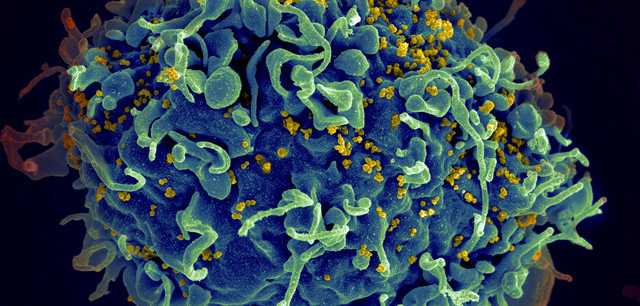Researchers have determined the 3-D structure of an HIV protein called Nef and ascertained how it connects with a protein called AP-2 found on the surface of CD4 immune cells. This discovery has identified a new potential drug target that might help mitigate the risks of various health conditions that occur at elevated rates among people living with HIV, even those on effective antiretroviral treatment.
By grasping how Nef binds to AP-2, Yonghwa Kwon, a PhD student at the University of Massachusetts at Dartmouth, and colleagues clarified exactly how Nef subverts the defense mechanisms of immune cells. They published their findings in Nature Structural & Molecular Biology.
The ultimate goal is to develop a molecule that would occupy the space on Nef to which AP-2 affixes itself. That way, the molecule could block the connection between the two proteins and compromise HIV’s ability to replicate or cause harm to the body through other means.
Suppressing Nef’s activity could be crucial because research has indicated that even when people with HIV have a fully suppressed viral load thanks to antiretroviral treatment, HIV-infected cells can still produce the protein. In turn, such production has been linked to various health problems associated with the virus.
“Researchers have succeeded in obtaining the three-dimensional structure between Nef-CD4 and AP-2, showing the contact surfaces and making possible other studies designed to yield a molecule that occupies this space so as to prevent the effects of the protein from advancing. This ‘photograph’ can serve as the basis for the development of other anti-HIV therapies," Luis Lamberti Pinto da Silva, PhD, of the University of São Paulo, who coauthored a commentary on the study, said in a press release.
To read a press release about the study, click here.
To read the study abstract, click here.







Comments
Comments